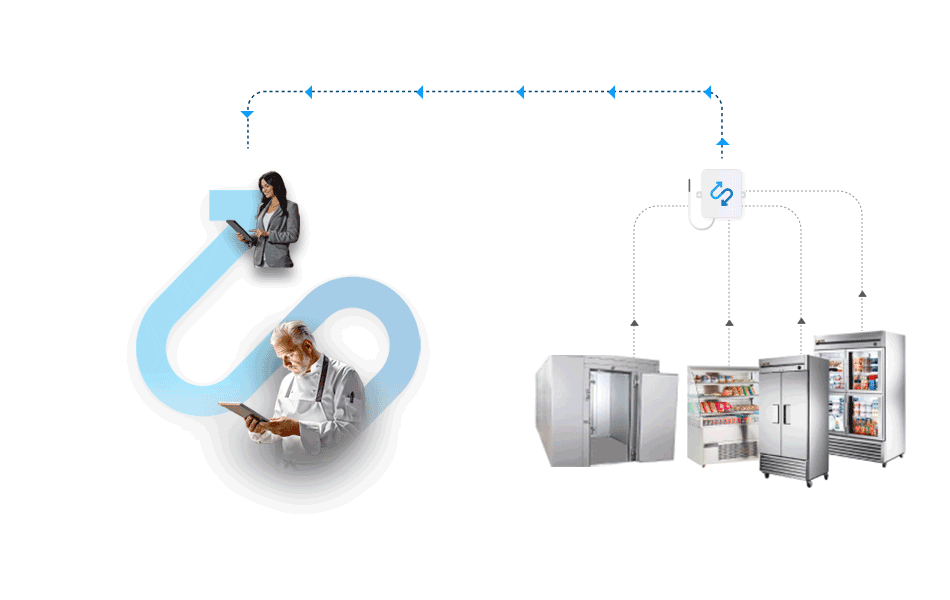In recent years, the landscape of multi-unit food service operations has been plagued by financial volatility. Despite a resurgence in consumer dining habits post-pandemic, these businesses continue to encounter unique hurdles. Escalating food and beverage inventory costs pose significant operational challenges in the kitchen, exacerbating thin profit margins amidst persistent battles against inflation and soaring food prices.
In this context, compelling food and beverage inventory management is a critical priority for multi-unit restaurant businesses. Failure to address this issue can have dire consequences, both operationally and affecting brand reputation. Hence, proactive measures are imperative to safeguard these vital assets.
Central to this endeavour is minimizing food inventory loss, which directly impacts profitability and operational efficiency. Specifically, attention must be directed towards storing and monitoring inventory with refrigeration equipment. In the face of escalating costs and intensifying competition, how multi-unit operations manage their equipment operations can determine their success or failure.
Traditionally, manual monitoring methods have prevailed, relying on labour-intensive processes such as pen-and-paper temperature logs. However, in the current landscape, this approach is no longer tenable. Automation through continuous temperature monitoring has transitioned from a luxury to a necessity. Regrettably, the adoption of automated temperature monitoring technology remains sluggish, with only five per cent of restaurants utilizing such solutions today.
A significant barrier to technology adoption in multi-unit restaurants is maintaining consistency and quality across all locations. Consequently, simplistic solutions, such as attaching sensors to refrigeration units, can prove inadequate. Instead, a shift towards a data-driven distributed approach is imperative to address tangible operational losses and intangible brand reputation risks.
Multi-unit restaurant operations encompass various models, including chain restaurants, franchises, and restaurant groups. Regardless of the model, it remains imperative to streamline equipment operations and ensure uniformity across all units.
Consider a hypothetical scenario of a multi-unit restaurant with 20 locations. Manual monitoring consumes significant labour resources, with daily temperature readings and audits demanding substantial time and effort. Moreover, human error can result in financial risks, including unexpected repair costs and inventory losses.
In contrast, a data-driven, distributed technology solution promises transformative outcomes. Automating temperature monitoring and incident management workflows significantly reduces manual labour, freeing up resources for customer service. Furthermore, the real-time insights empower managers to address anomalies promptly, mitigating financial risks associated with equipment malfunction and inventory loss.
This type of kitchen equipment monitoring for multi-unit restaurant operations includes the following benefits:
Uniform technology implementation: A consistent technology solution must be deployed across all units to ensure standardized equipment monitoring practices throughout the organization.
Inclusive user engagement: The technology solution caters to all users within the multi-unit operation, including individual restaurant staff, multi-unit management, regional head office operations, and corporate headquarters, to instill confidence in the monitoring practice’s efficacy.
Empowering multi-unit managers: The technology solution must empower multi-unit managers, such as general and regional operations managers, to monitor equipment temperature anomalies across their respective locations remotely. However, it should not burden them with location-level operational responsibilities. Instead, it should facilitate efficient incident management workflows to address kitchen and inventory anomalies promptly.
Comprehensive reporting capabilities: The technology solution should offer robust reporting functionalities, enabling the generation of equipment data reports ranging from individual pieces of equipment at specific locations to aggregated reports across multiple locations. Additionally, if the multi-unit operation encompasses multiple concepts or brands, the solution should present aggregated data for the entire operation and individual concepts or brands.
If you are a multi-unit restaurant with 20 locations or more, implementation of a data-driven, distributed technology solution should yield the following benefits:
- Elimination of location-level manual monitoring for 100 pieces of equipment across 20 locations.
- 30 staff members can be offloaded from manual temperature monitoring tasks, allowing them to allocate an additional 10 hours daily to customer service.
- Generation of 9,600 accurate temperature readings daily without human intervention.
- Elimination of error-prone and labour-intensive manual monitoring, resulting in significant time savings.
- Eliminating travel time for multi-unit managers to monitor equipment operations at individual locations.
- Paper logs are replaced with scheduled digital reports daily, weekly, and monthly across the organization.
- Early detection of refrigeration loss, preventing spoilage of inventory and foodwaste. Multi-unit managers can address equipment temperature anomalies across locations through efficient incident management workflows in the kitchen.
- Proactively reduce equipment repair and maintenance costs by detecting anomalies through continuous temperature monitoring.
These outcomes underscore the transformative potential of data-driven, distributed technology solutions in optimizing operational efficiency and mitigating financial risks for multi-unit restaurant operations.
It’s time for the multi-unit restaurant industry in Canada to embrace innovative technology solutions. By doing so, they can bolster their profit margins and spearhead a transformation in operational practices across the sector.
The same article is published on Restobiz online magazine. you can access it here.








